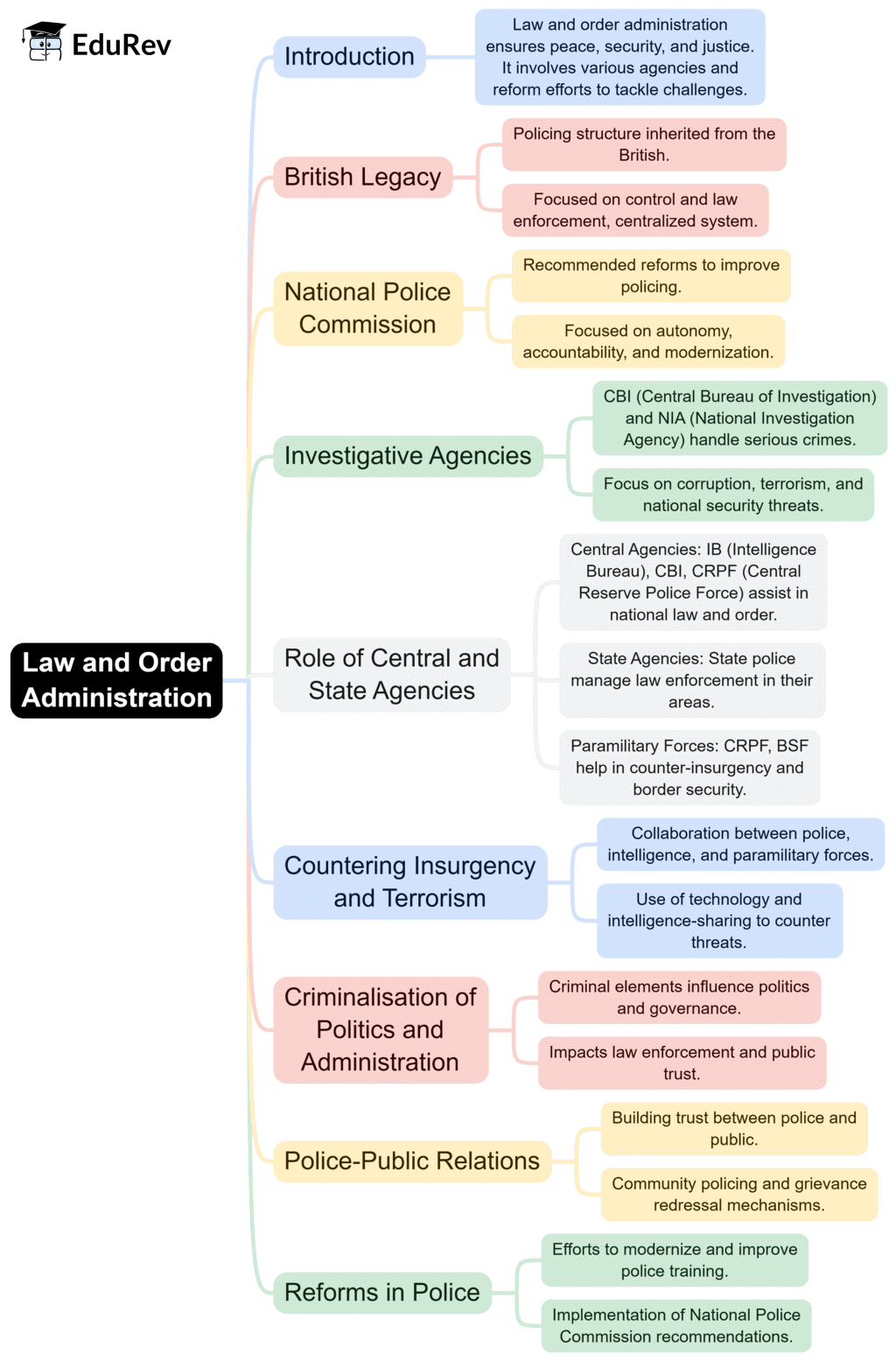UPSC Exam > UPSC Notes > Public Administration Optional for UPSC (Notes) > Mind Map: Law and Order Administration
Mind Map: Law and Order Administration | Public Administration Optional for UPSC (Notes) PDF Download

The document Mind Map: Law and Order Administration | Public Administration Optional for UPSC (Notes) is a part of the UPSC Course Public Administration Optional for UPSC (Notes).
All you need of UPSC at this link: UPSC
|
58 videos|242 docs
|
FAQs on Mind Map: Law and Order Administration - Public Administration Optional for UPSC (Notes)
| 1. What are the main components of law and order administration in India? |  |
Ans. The main components of law and order administration in India include the police force, judiciary, correctional facilities, and community policing initiatives. The police are responsible for maintaining public order and enforcing laws, while the judiciary interprets and applies the law. Correctional facilities manage offenders, and community policing involves collaboration between the police and the community to enhance safety and trust.
| 2. How does the Indian Constitution address law and order? |  |
Ans. The Indian Constitution addresses law and order primarily through the Fundamental Rights and the Directive Principles of State Policy. Article 21 guarantees the right to life and personal liberty, which includes protection from arbitrary arrest and detention. Additionally, the Constitution empowers the state to enact laws for maintaining public order under the Seventh Schedule, where 'Police' and 'Public Order' are subjects of the State List.
| 3. What role does the police play in maintaining law and order? |  |
Ans. The police play a crucial role in maintaining law and order by preventing crime, investigating offenses, enforcing laws, and ensuring public safety. They respond to emergencies, conduct patrols, and engage in community outreach to foster trust and cooperation with the public. The police are also involved in crowd control during public events and managing civil disturbances.
| 4. What challenges does law and order administration face in India? |  |
Ans. Law and order administration in India faces several challenges, including inadequate resources, corruption, political interference, and public mistrust. Other issues include a rising crime rate, especially in urban areas, insufficient training for police personnel, and the need for modernization and use of technology in policing to effectively combat crime.
| 5. How can community participation improve law and order? |  |
Ans. Community participation can significantly improve law and order by fostering collaboration between citizens and law enforcement agencies. Engaging the community in crime prevention initiatives, neighborhood watch programs, and public forums can enhance trust, provide valuable information to the police, and empower citizens to take an active role in ensuring safety and security in their neighborhoods.
Related Searches





















